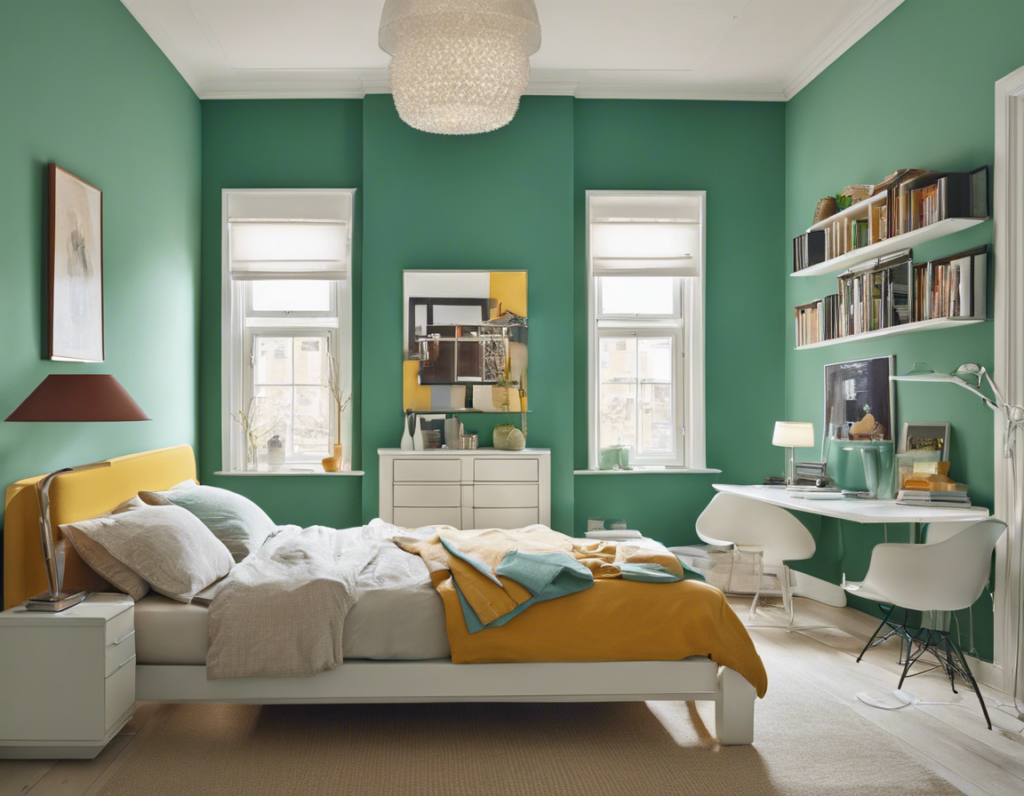When it comes to designing a room, one of the most crucial elements to consider is the colour combination. The right combination of colours can set the mood, create harmony, and enhance the overall aesthetic appeal of a space. Whether you are redecorating your living room, bedroom, kitchen, or any other room in your home, choosing the perfect colours can make a significant difference. In this comprehensive guide, we will explore how to create the perfect room colour combination to achieve the desired look and feel.
Understanding Colour Theory
Before delving into specific colour combinations, it’s essential to have a basic understanding of colour theory. The colour wheel is a valuable tool that can help you identify which colours work well together. The wheel consists of primary colours (red, blue, yellow), secondary colours (green, purple, orange), and tertiary colours (a mix of primary and secondary colours). Complementary colours are opposite each other on the wheel and provide a high contrast, while analogous colours are adjacent to each other and offer a more harmonious blend.
Key Points:
- Primary colours: Red, blue, yellow
- Secondary colours: Green, purple, orange
- Tertiary colours: Mix of primary and secondary colours
- Complementary colours: Opposite on the colour wheel
- Analogous colours: Adjacent on the colour wheel
Choosing a Colour Scheme
When selecting a colour scheme for a room, consider the overall atmosphere you want to create. Each colour evokes different emotions and can impact the perceived size and shape of a space. Here are some common colour schemes to consider:
1. Monochromatic Colour Scheme
A monochromatic colour scheme involves using varying shades of the same colour. This creates a cohesive and harmonious look without the need for contrasting colours. For example, pairing light blue walls with navy blue furniture and accents can result in a sophisticated and calming space.
2. Analogous Colour Scheme
An analogous colour scheme involves selecting colours that are adjacent to each other on the colour wheel. This creates a seamless transition between hues and is pleasing to the eye. For instance, combining shades of green and blue can create a serene and tranquil atmosphere in a room.
3. Complementary Colour Scheme
A complementary colour scheme involves pairing colours that are opposite each other on the colour wheel. This creates a high contrast and dynamic look. For example, combining blue and orange can create a vibrant and energetic space.
4. Triadic Colour Scheme
A triadic colour scheme involves selecting three colours that are evenly spaced apart on the colour wheel. This scheme offers a balanced blend of colours and can create a visually appealing room. For example, combining red, yellow, and blue can result in a bold and exciting space.
Tips for Creating the Perfect Colour Combination
- Start with a focal point: Choose a dominant colour as a focal point and build around it with complementary or analogous colours.
- Consider the room’s purpose: The colour scheme should align with the room’s function. For example, soothing colours work well in bedrooms, while vibrant colours are ideal for entertaining spaces.
- Balance light and dark tones: Incorporate a mix of light and dark shades to create depth and dimension in the room.
- Use the 60-30-10 rule: Allocate 60% of the room to a dominant colour, 30% to a secondary colour, and 10% to an accent colour for a well-balanced look.
- Test samples: Always test paint samples on the wall before committing to a full room makeover to ensure the colours look cohesive in the space’s lighting.
Frequently Asked Questions (FAQs)
1. How can I make a small room appear larger with colour?
Using light, neutral colours can help make a small room appear larger by reflecting more light and creating a sense of openness. Avoid dark colours that can make a room feel cramped.
2. Can I mix patterns with different colours in the same room?
Yes, you can mix patterns with different colours, but it’s essential to ensure that there is a cohesive colour palette tying everything together. Stick to a specific colour scheme to prevent the patterns from clashing.
3. What are some timeless colour combinations that never go out of style?
Classic combinations like black and white, blue and white, and beige and grey are timeless choices that can adapt to various design styles and trends.
4. How can I create a cohesive colour scheme throughout my entire home?
Choose a consistent colour palette for your home, incorporating similar hues and tones in different rooms. This will create a cohesive flow and connection between spaces.
5. Should I follow current trends or choose colours that I personally love?
While it’s essential to consider current trends for inspiration, it’s more important to choose colours that resonate with you personally. Select colours that make you feel comfortable and happy in your space.
In conclusion, creating the perfect room colour combination involves understanding colour theory, choosing a suitable colour scheme, and implementing design tips to achieve a cohesive and visually appealing space. By following these guidelines, you can transform any room in your home into a harmonious and stylish oasis that reflects your personal taste and enhances your living experience.
